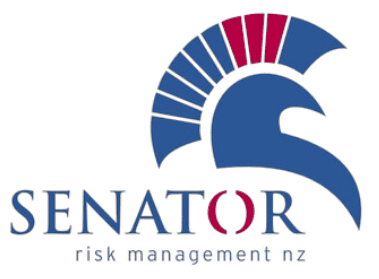We are pleased to have contributed to the below article with Australia and New Zealand Institute of Insurance and Finance written by Domini Stuart.
Over the past few years directors’ and officers’ liability insurance (D&O) premiums have skyrocketed.
'Globally, they’ve increased by anything from 30 to 200 per cent,' says Zach Wong, co-founder of Singapore insurance broker Provide.
Nick Chubb, head of financial lines at Howden Insurance Brokers, estimates that in Australia, increases in the 2020-21 financial year were typically in the order of 100 percent on top of similar increases in 2019-20.
'As a result, we have observed companies reconsidering the basis on which they structure their D&O insurance in terms of coverage sections, limits of indemnity and self-insured retention levels,' he says.
Increasing scrutiny
Increasing interest in how well companies are managing their Environmental, Social and Governance (ESG) risk is contributing to rising prices.
And Wong believes that two major trends - event-driven litigation and global commitment to social justice - will continue to drive ESG-related risk.
'Together, these encompass the four rapidly growing categories of climate-related risk - lawsuits, employee wellbeing, money laundering and cyber security,' he says
D&O insurers are certainly paying more attention to risks associated with ESG.
'They have always scrutinised the components of ESG in assessing D&O risks, but this has become more focused as ESG issues have become more co-ordinated under a defined umbrella,' says Chubb.
'This also coincides with heightened expectations that companies should behave as good corporate citizens when it comes to issues spanning climate change, pollution, diversity and inclusion, chartable initiatives, customer engagement and remuneration practices.'
Reputation at risk
According to Nick Kaspers, principal of Senator Risk Management in New Zealand, the emerging risks are of the kind that put reputations at stake - including the threat of lost revenue, eroded trust, a damaged culture and even legal action.
'Public opinion is a very significant part of ESG risk management,' Kaspers says.
‘The social media traffic around COVID-19 showed how easily miscommunication, broken promises or lack of transparency can go viral.’
More directly, exposure to claims, particularly on the governance front, came into focus through the Royal Commission into Misconduct in the Banking, Superannuation and Financial Services Industry.
‘Insurers are taking more time to understand organisational culture rather than narrowly analysing an insured’s financial performance,’ says Chubb.
While the degree of risk is certainly increasing, the risks themselves are not necessarily new.
‘For example, ASIC has identified the disclosure and management of climate-related risk as a key director responsibility, and remuneration practices were in the spotlight in the Hayne Royal Commission,’ says Chubb.
‘Risks will also vary according to the industry and the company. A large, listed resource company will have a completely different risk profile from a small, privately owned financial services business.'
And, of course, ESG risk issues for D&O insurance relate to directors’ duties and, as such, will be considered differently for other classes of insurance.’
Assessing the risks
The risks may not be new, but brokers still face the challenge of assessing a rapidly changing landscape and articulating these risks to underwriters.
‘Some insurers are already creating parametric outcomes around reputational damage,’ says points out. ‘We’re also seeing new tools being developed in the artificial intelligence and machine learning space to help businesses identify the potential for ESG risk.’
Dawn James, D&O account manager at KBI Group Pty Ltd, believes that insurers consider the risk through two different lenses when they’re assessing applications for D&O.
‘This first is the yes/no question of whether they want to insure the company or not,’ she says.
‘Insurers need to feel confident that, if there is a claim in the future, it won’t be the result of poor internal risk management processes or poor culture.'
'The second is whether the company is agile enough to respond to any change, whether that’s within its own sector or global. Here, there’s room for the insurer to get comfortable around the risk and mitigate as much as it needs to.’
Companies can expect to be questioned on a wide range of issues.
‘There was a case in Singapore recently where a construction company trying to get D&O insurance was, as you’d expect, grilled on how it was dealing with waste, treating emissions and reporting their accountability results,’ says Wong.
‘This extended to issues such as corporate lobbying — how they would respond to it and whether they lobbied themselves. And it’s no longer just a matter of answering the questions,
insurers expect to see evidence, such as the results of employee surveys to support its claims about employee welfare.’
It's up to the broker to ensure they’re fully prepared when they talk to insurers.
‘The best thing a broker can do to help their clients is collect all of the relevant information from the company and the board so the insurer has a clear picture when they’re looking at the risk,’ says James.
Overall, when it comes to annual renewal of their D&O policies, companies are expected to demonstrate a positive and proactive approach to ESG and how this is balanced with achieving shareholder returns.
‘A good example of this was insurer interest in how financial services companies in particular were dealing with customer hardship through the early stages of COVID-19,’ says Chubb. ‘This was seen as being a bit of a window into broader cultural positioning.’
Wong would also like to see more insurers taking a proactive approach to supporting their clients.
‘As an industry, we’re well placed to help D&O clients mitigate ESG risks because we’re also exposed,’ says Wong.
‘Insurers could deploy their own in-house consulting teams to help clients meet ESG targets.
'For example, we worked with a construction company client to review its entire supply chain to make sure there were no hidden risks, such as dubious employment practices. We believe it’s mutually beneficial to build relationships based on trust.’
